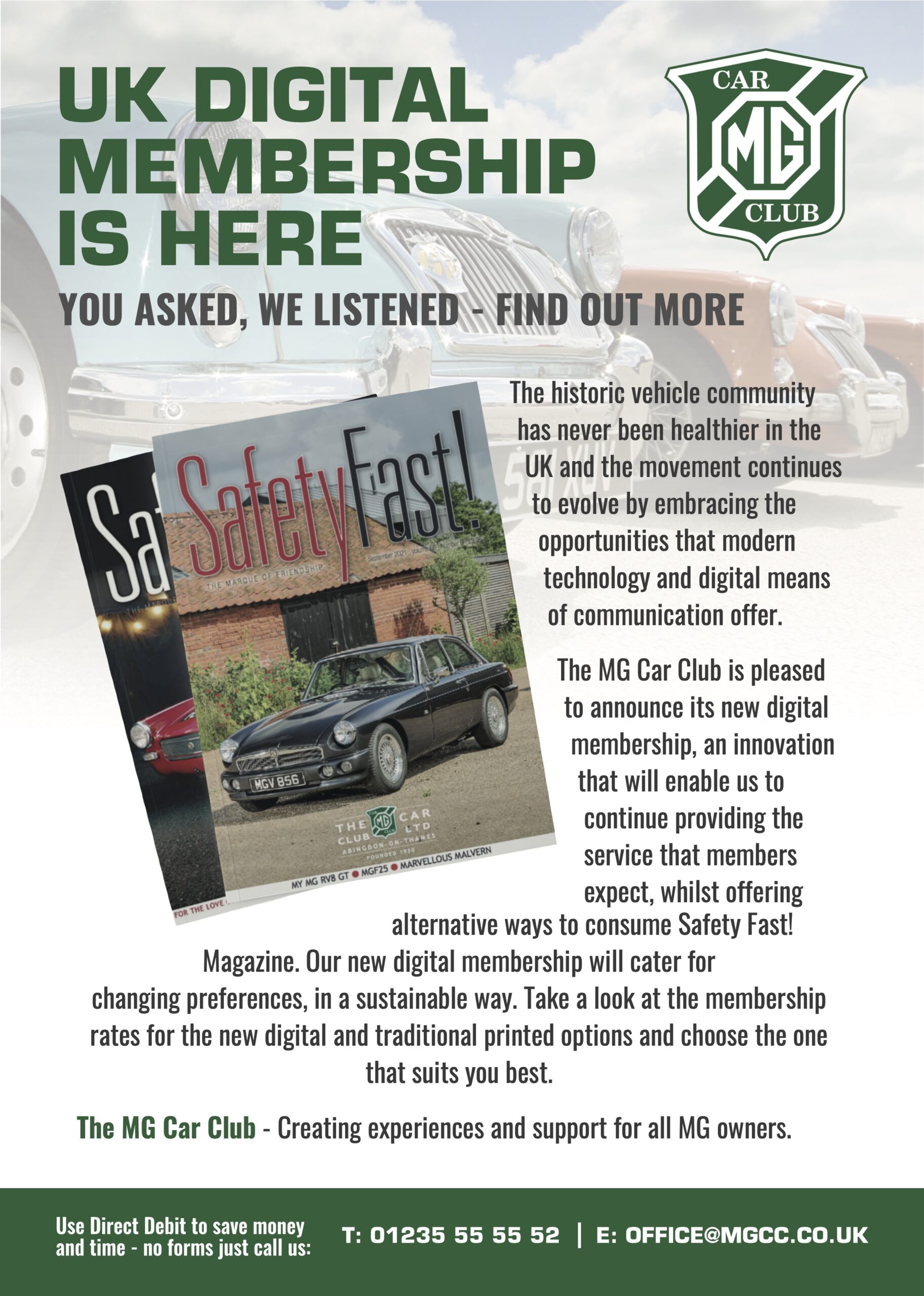Reproduction in whole or in part of any article published on this website is prohibited without written permission of The MG Car Club.
Mighty Metros
By Jeff Ruggles
The MG Metro Cup may have been running for 27 years now, but its appeal shows no sign of diminishing. For proof, look no further than two Metro-mad families…
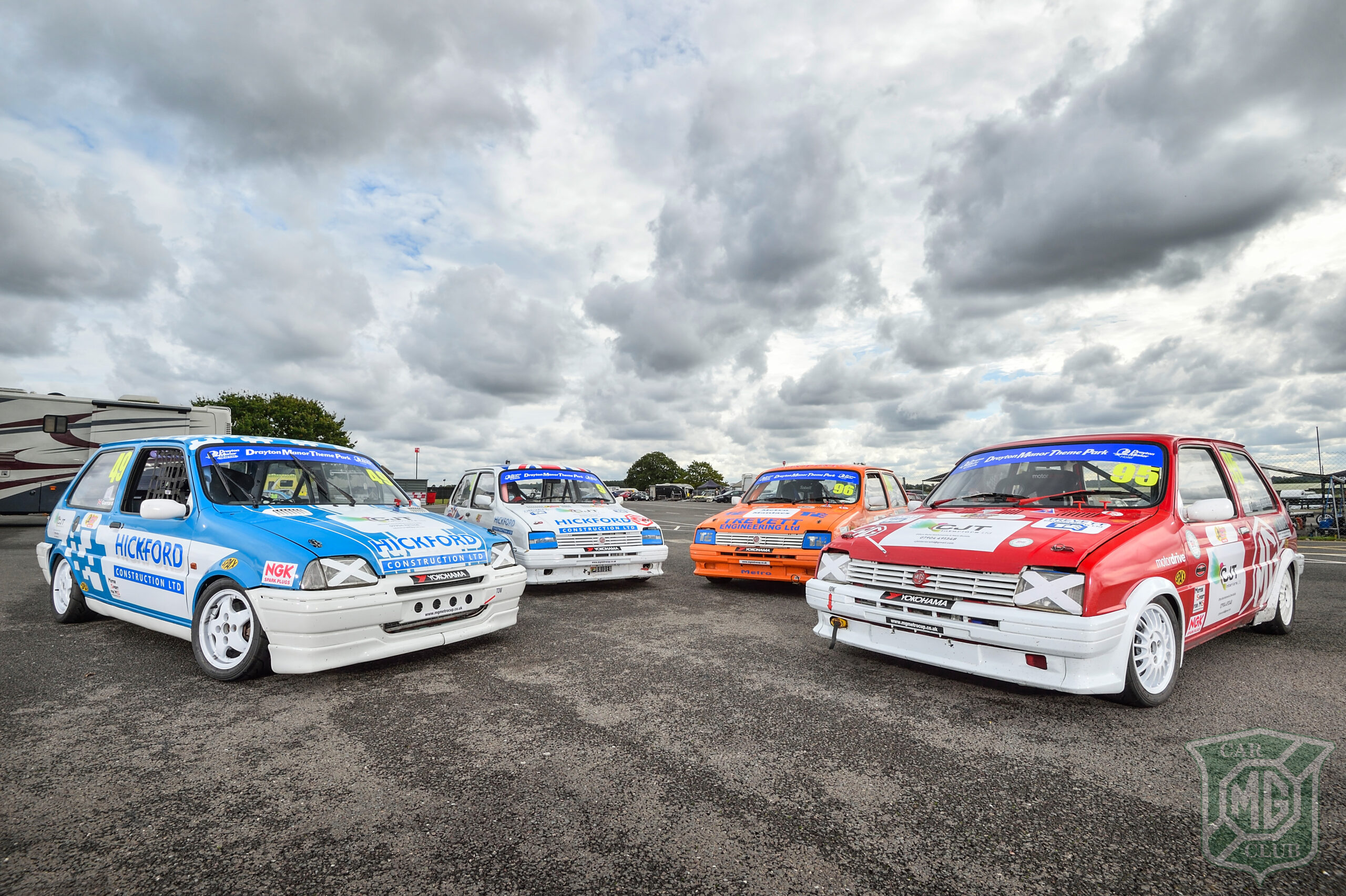
From the outside looking in, the world of motorsport can look daunting. Granted, at the top level it’s mostly young blokes taking time away from their tax havens in Monaco and getting paid millions – hardly something that most of us can relate to. But what if we told you that you could still get that all-important green-light adrenaline rush in a familiar three-door hatchback, and all amidst a classless and welcoming atmosphere? Step forward the Drayton Manor MG Metro Cup.
Started in 1992, the Cup is organised by the MG Car Club and caters for both A-Series-powered MG Metros and their K-Series Metro/Rover 100 successors. It’s long been about providing an easy way into motor racing for drivers with a limited budget, but it’s a lot more than just a stepping stone. The championship continues to attract a wide range of participants regardless of age, experience or gender. For evidence, you need only look towards two particularly closely-knit families – the Javes and the Trevetts.
Generation game
Both families bring a lot to the championship, but together their contribution is even more remarkable. Having joined forces from the very beginning, they now contribute an arsenal of drivers, committee members and helpers spanning three generations, not to mention four race-ready Metros. At the root of it all are 71-year-old Dave Javes and 75-year-old Dick Trevett, who share the orange MG Metro Turbo, car 96. The red MG Metro Turbo wearing number 95, meanwhile, is driven by Dick’s 24-year-old granddaughter, Kyla Birdseye, who shares the car with her mum and Dick’s daughter, 47-year old Mel. Then there’s Mel’s 52-year-old fiancé Richard Garrard, who runs both a white MG Metro Turbo and a K-Series GTi.
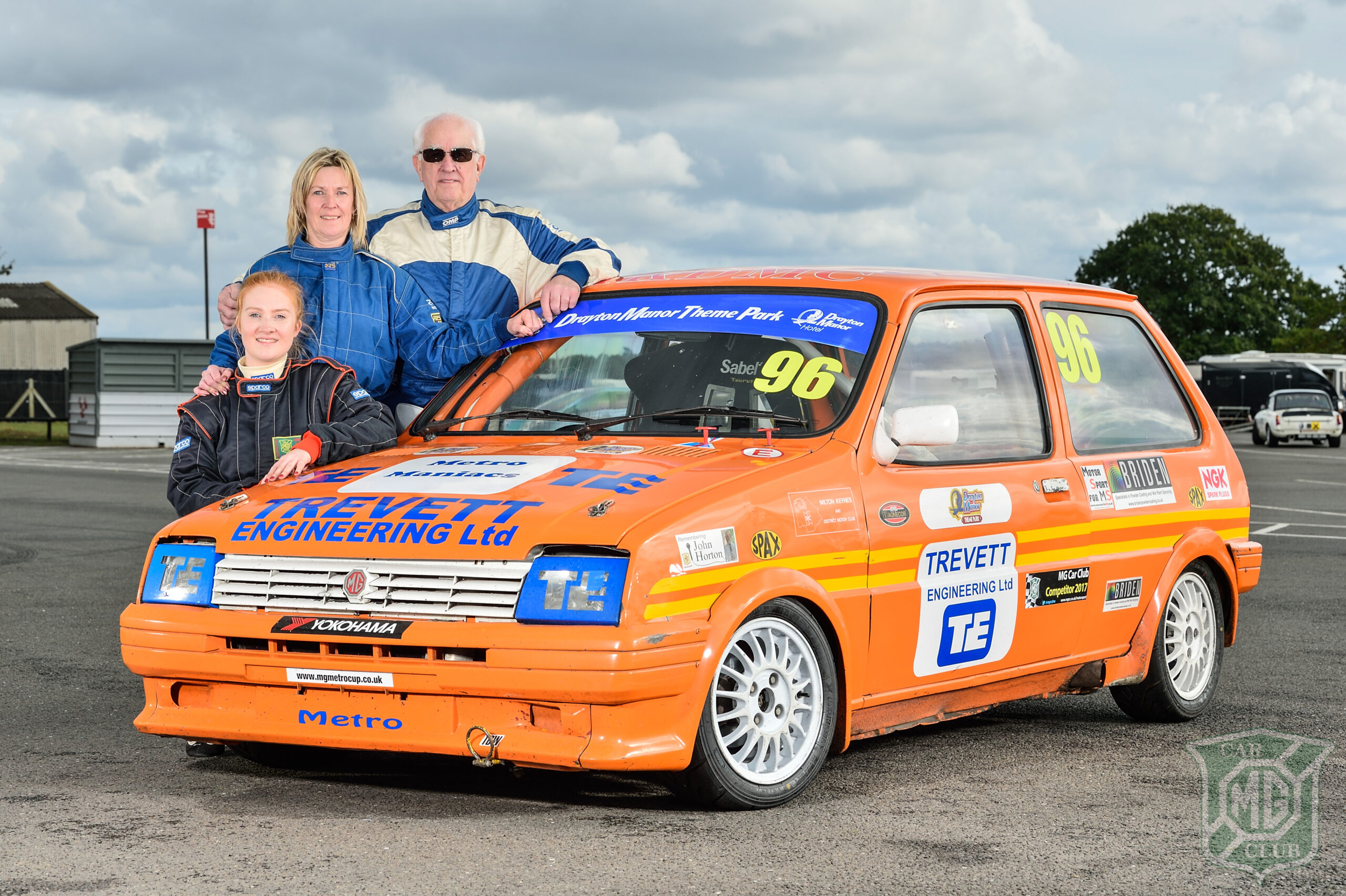
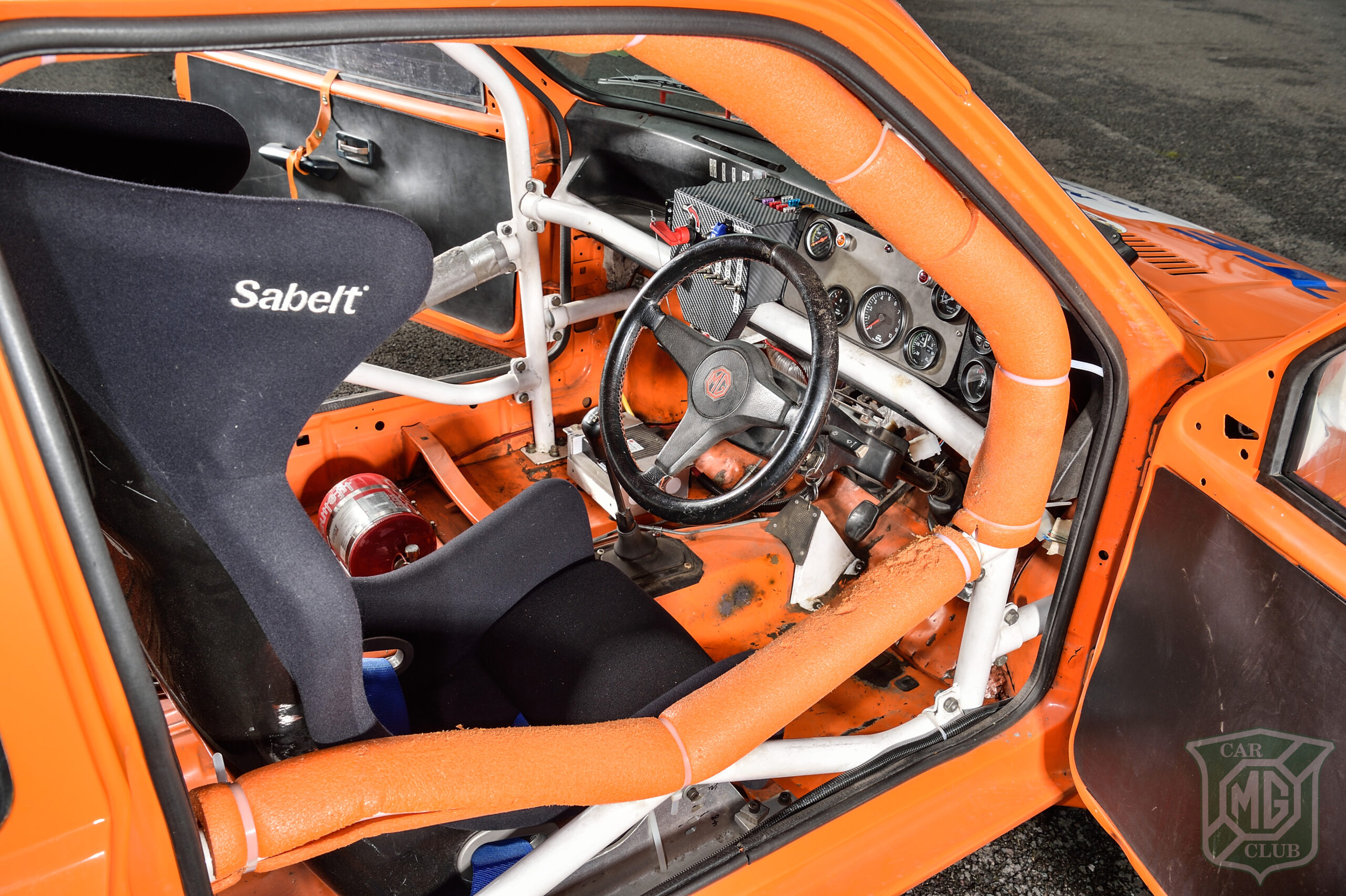
But the involvement doesn’t stop there. Emma Cross and Kim Javes are Dave’s daughters, and though they don’t drive, both are a vital part of the racing family. Emma is instrumental in the success of the championship in her role as co-ordinator, while Kim is the series’ registrar. With both of their kids also heavily involved at race meetings, it is fair to say that both of these Milton Keynes-based families have Metro racing in their blood.
The strong relationship between the two families extends back to the late 1960s, when Dave and Dick began watching RAC rallies together as members of the Milton Keynes and District Motor Club – a group that both families are still heavily involved with. Both have a strong engineering background, with Dick having run Trevett Engineering Ltd since 1982.
“A friend of ours wanted to run a car, and because of our engineering knowledge, he asked us if we’d help,” remembers Dick. “Basically, we haven’t taken our hands off his car ever since, because we bought it from him after two years!”
Purchased in 1993, that car was the orange MG Metro Turbo they still campaign to this day. It already had an illustrious history, however, having been raced to multiple title successes in the old Rover-backed Metro Challenge by the legendary Peter Baldwin. Initially Dave and Dick competed in the MG Cup, which is now sponsored by Peter Best Insurance, but back then was known as the Phoenix Petroleum Challenge and later the Total Butler MG Challenge. After racing with other MG grids for a few years, they switched to the MG Metro Cup and have taken turns to complete a full season ever since.
Naturally, Emma, Kim and Mel all got involved, and it soon became the norm for their children to attend too, despite being as young as three weeks old. “I’ve been going to every race meeting with Dad and Dave since 1993,” says Mel. “I think we’ve only missed about three meetings over all those years, and I’ve always been on the pit wall doing the pit board, and in the early days, dragging a pit trolley around. I had my race licence for 10 years back then, on the off-chance that Dad or Dave wouldn’t be racing one weekend, but it never happened.”
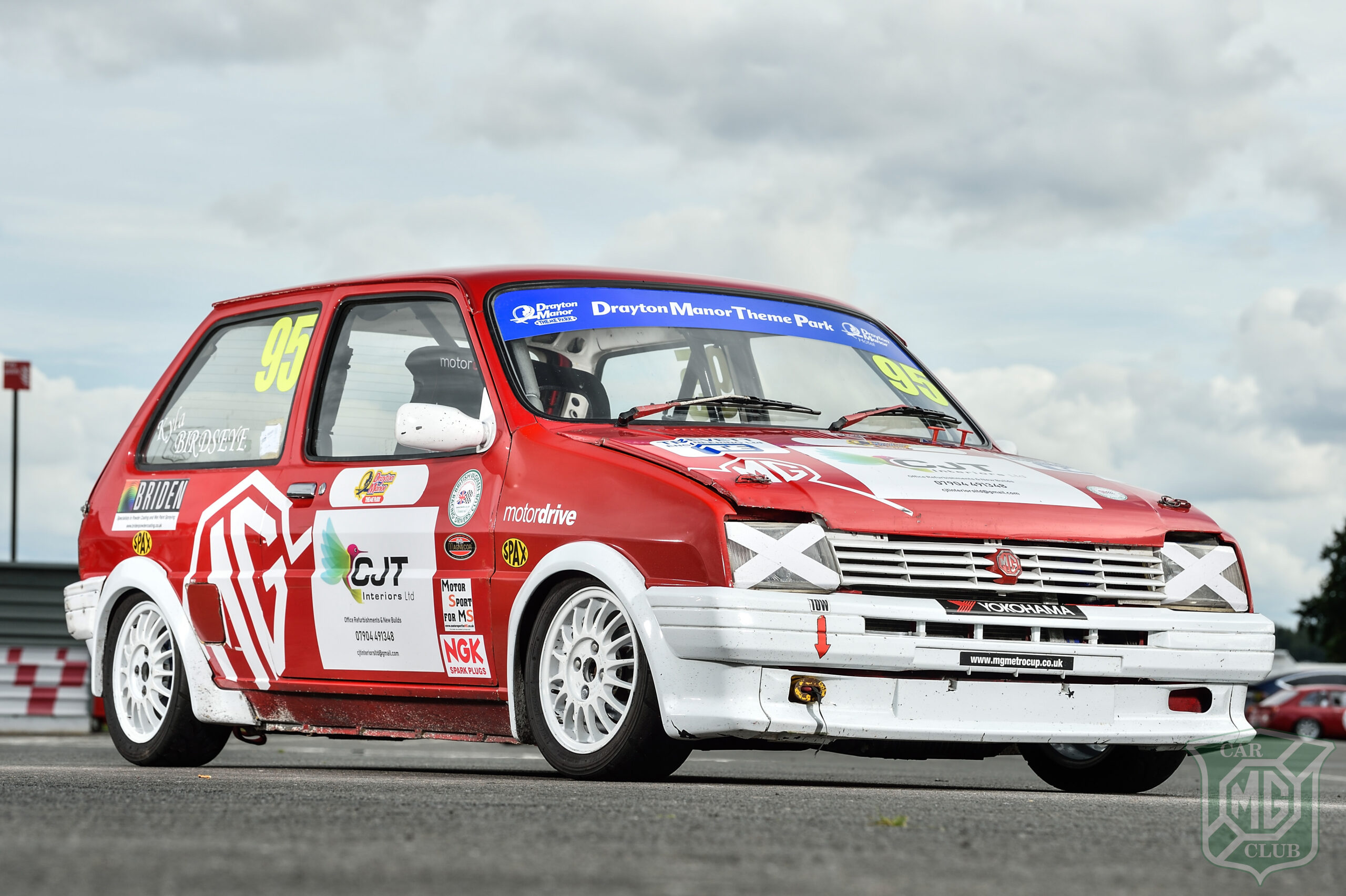
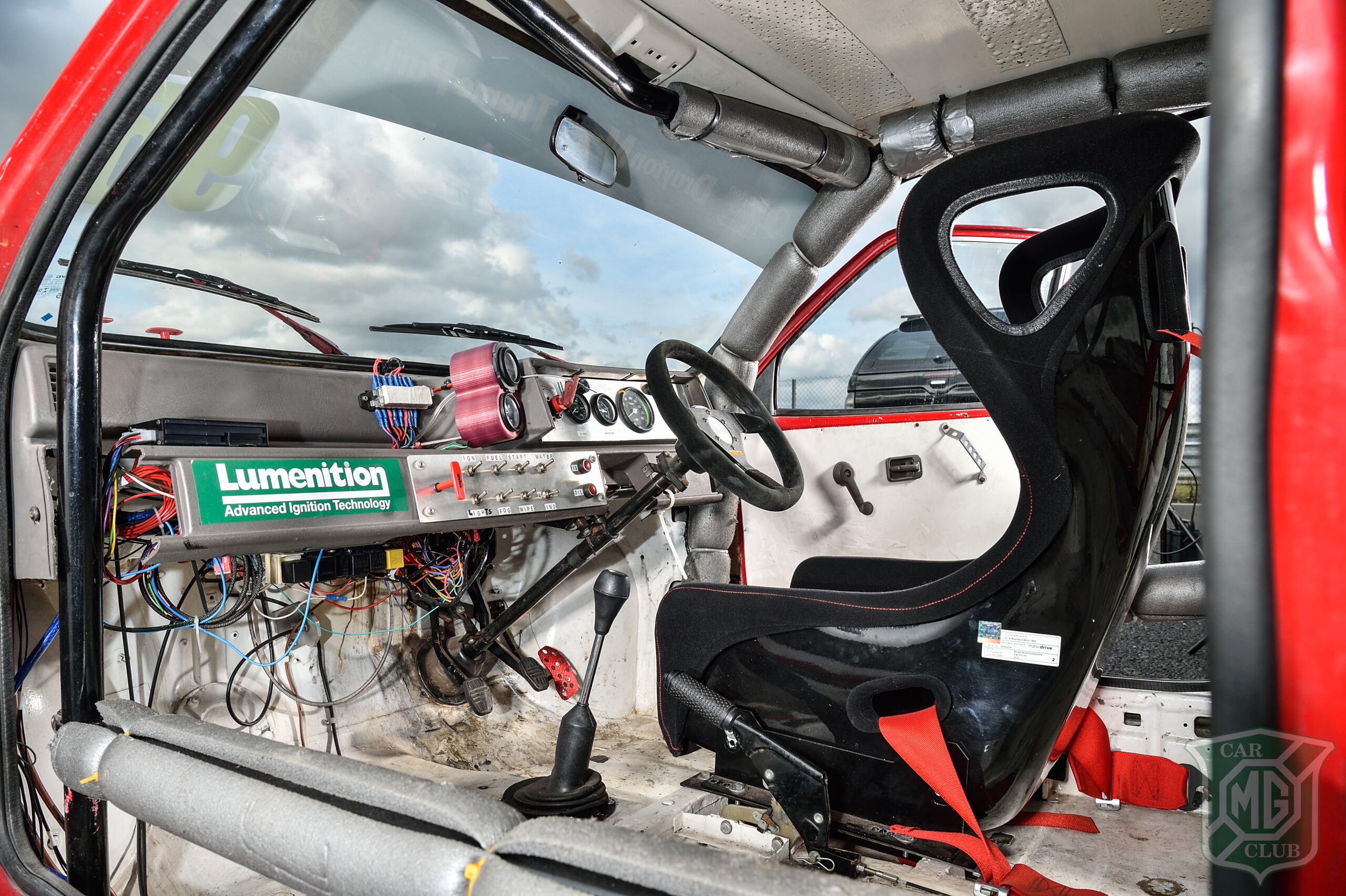
Mel met her fiancé Richard in 2002, and by 2004 he’d joined the grid. “I watched Dick race, absolutely loved it and thought ‘I could do that’,” he reports. “I’d done nothing else before, but went and did my ARDS, bought a car and got out there.”
Fast forward a decade, and it was time for Mel’s daughter Kyla to take to the track. “I went to my first-ever race when I was four months old, so I’ve grown up with it,” Kyla explains. “Because I’d been going for so many years, and with the excitement of being round the race cars, I really wanted to have a go. My ARDS licence was my Christmas present at 17, and I’d only been driving for a year when I started racing. My first race was in 2014 at Silverstone, on the National track.”
That first outing took place in Richard’s car, but by then a third MG Metro Turbo had joined the fleet. This one had started out as a donor car but proved to be too good to cut up, and so would prove ideal for Kyla once it had been stripped and rebuilt to the correct specification. She’s raced the car ever since, but has missed a few meetings due to work commitments. Luckily, though, Mel has been able to step in. “In 2014, Kyla and Richard bought me my ARDS test and I got my licence, and in 2015 I finally had my first race at Mallory Park,” she tells us. “Only when Kyla is unable to race do I get the chance to drive the car. I did more than two races for the first-time last year.”
A couple of seasons ago, Richard added his K-Series Metro to the fleet, completing a quartet of race cars between the two families. The old car hasn’t sat idle, though, as family friend Mark Wilson took over the controls for 2019. He was only planning to do one or two races, but true to form he loved the paddock environment so much he ended up doing the full season.
Warm welcome
The families have enjoyed plenty of success over the years. In the 2019 standings, Dick and Richard were third and fourth behind the victorious Jack Ashton and Dan Willars, but there’s a whole lot more to their continued involvement than results. “I’ve been in the same championship for so long because it is a good championship,” says Dick. “It’s a great weekend away with friends and the racing just comes on top of it. It’s very friendly – if somebody breaks down, you get half a dozen people giving you a hand,” Dick continues. “If you’re stuck for a part, there will be someone in the paddock who will find it for you. We had a breakdown at Donington this year and somebody lent us a cylinder head all ready to run – they actually went home and got it for us.”
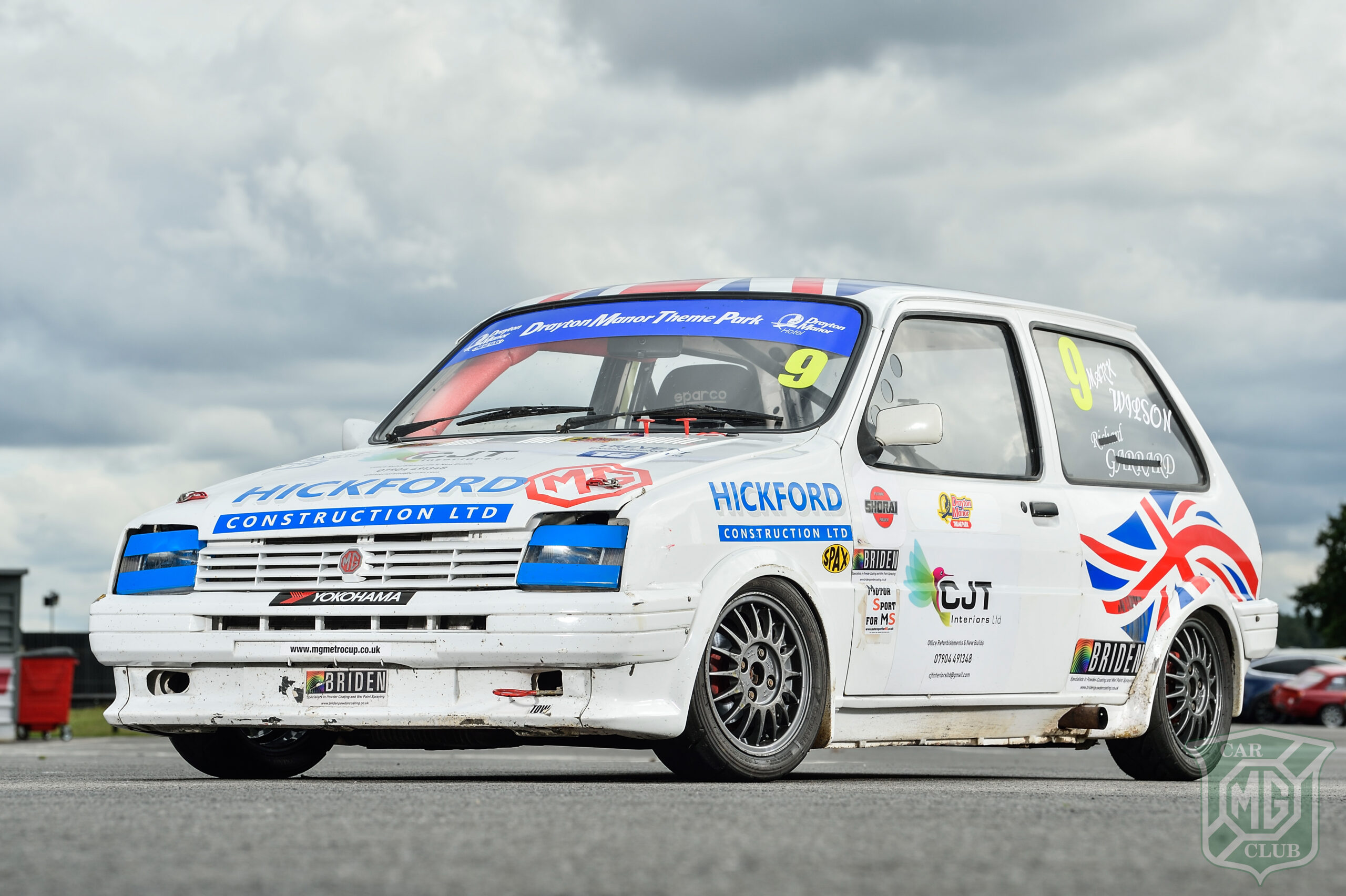
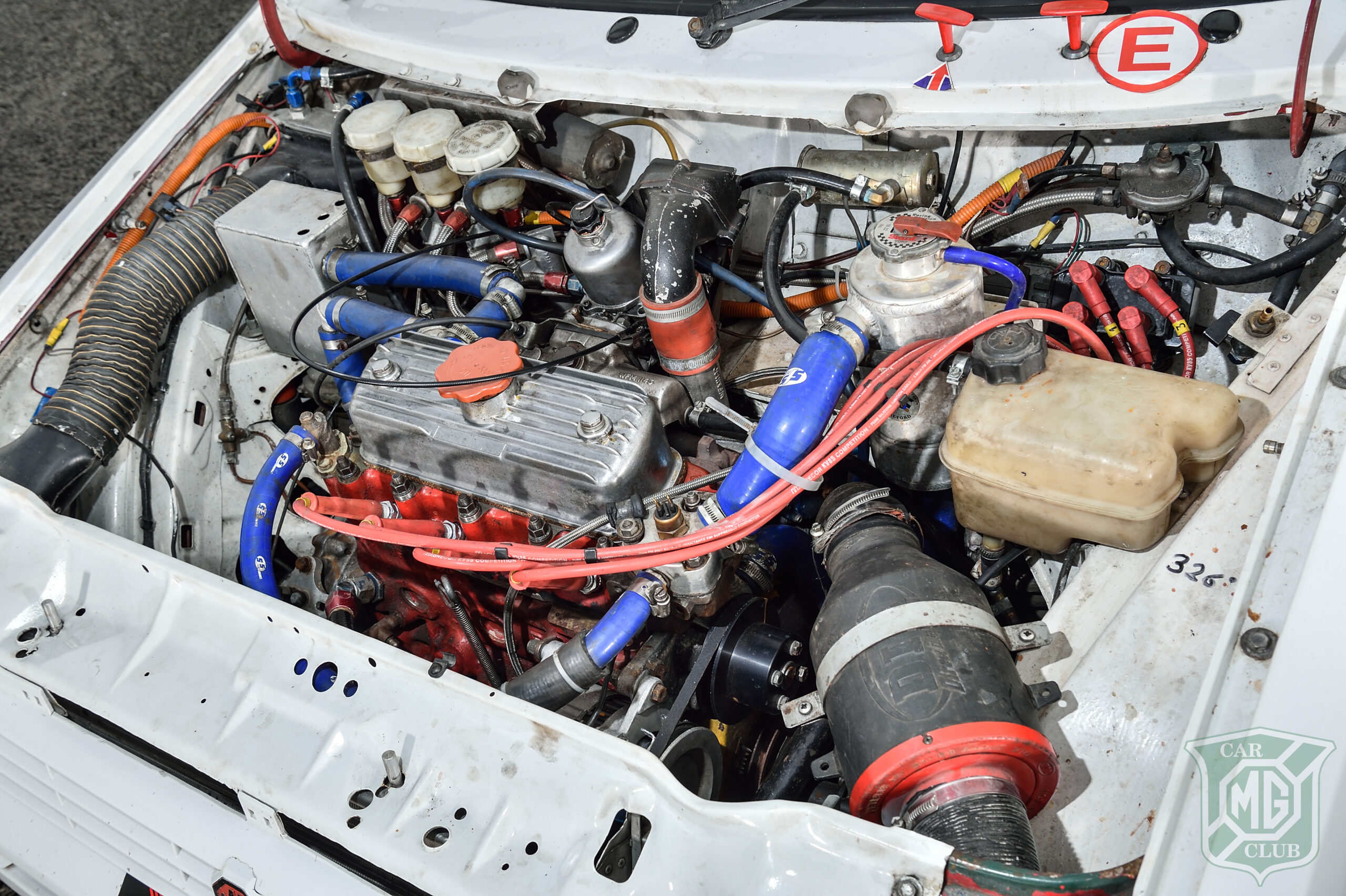
Emma recalls an incident at Cadwell several seasons ago: “On the Saturday, one of our drivers had brake failure and ploughed straight into the barrier at the hairpin. He was ready to give up, but within two hours people had called around the local suppliers and scrapyards and got replacement bits delivered. They were all working on it under torch light until midnight, and though he missed the first race, he managed to get out for the second one and came in the top six!
“Our ultimate aim is to have everybody starting and finishing a race, and for everyone to enjoy themselves with clean, fun racing,” she adds. “I know I’m a bit biased, but I do feel we have ticked those boxes.”
Of course, the elephant in the room when encouraging people to race Metros is a perceived lack of cars. MG Metros are now rare in any guise, and they haven’t made any form of Metro, even the Rover 100, for more than 20 years. However, that doesn’t appear to be much of a hindrance. “There are cars out there,” says Emma.
“We know of a few that are for sale, and over the winter we will be updating our website so that people can list car and parts. We’ll also be covering things like getting your race licence, as we want to show everyone it’s not as scary or hard as some people may think it is.”
We shouldn’t underestimate the impact of nostalgia as an attraction either – many potential racers in their 30s and 40s will have grown up with MG Metros and can now afford to race them. On top of that, the Metro has gained a retro-cool following amongst younger enthusiasts. In any case, later cars are still relatively plentiful, and you can even race a five-door version if you so desire.
“There is a whole clan of Metro lovers and we want to reach out to them,” explains Emma. “Coming with us would be the next step up from a track day. I know that once they’ve come and raced with us, they won’t want to go anywhere else.”
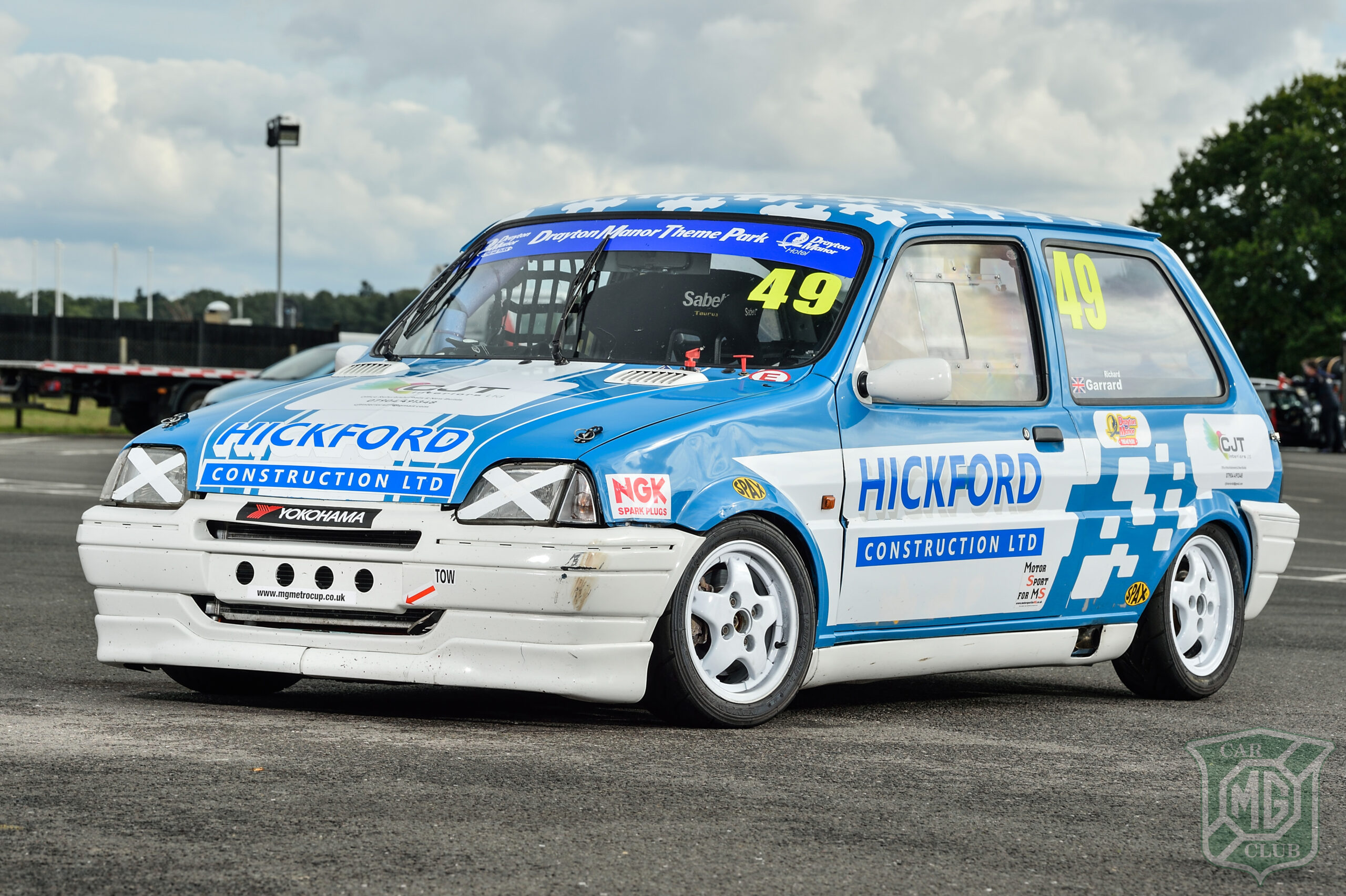
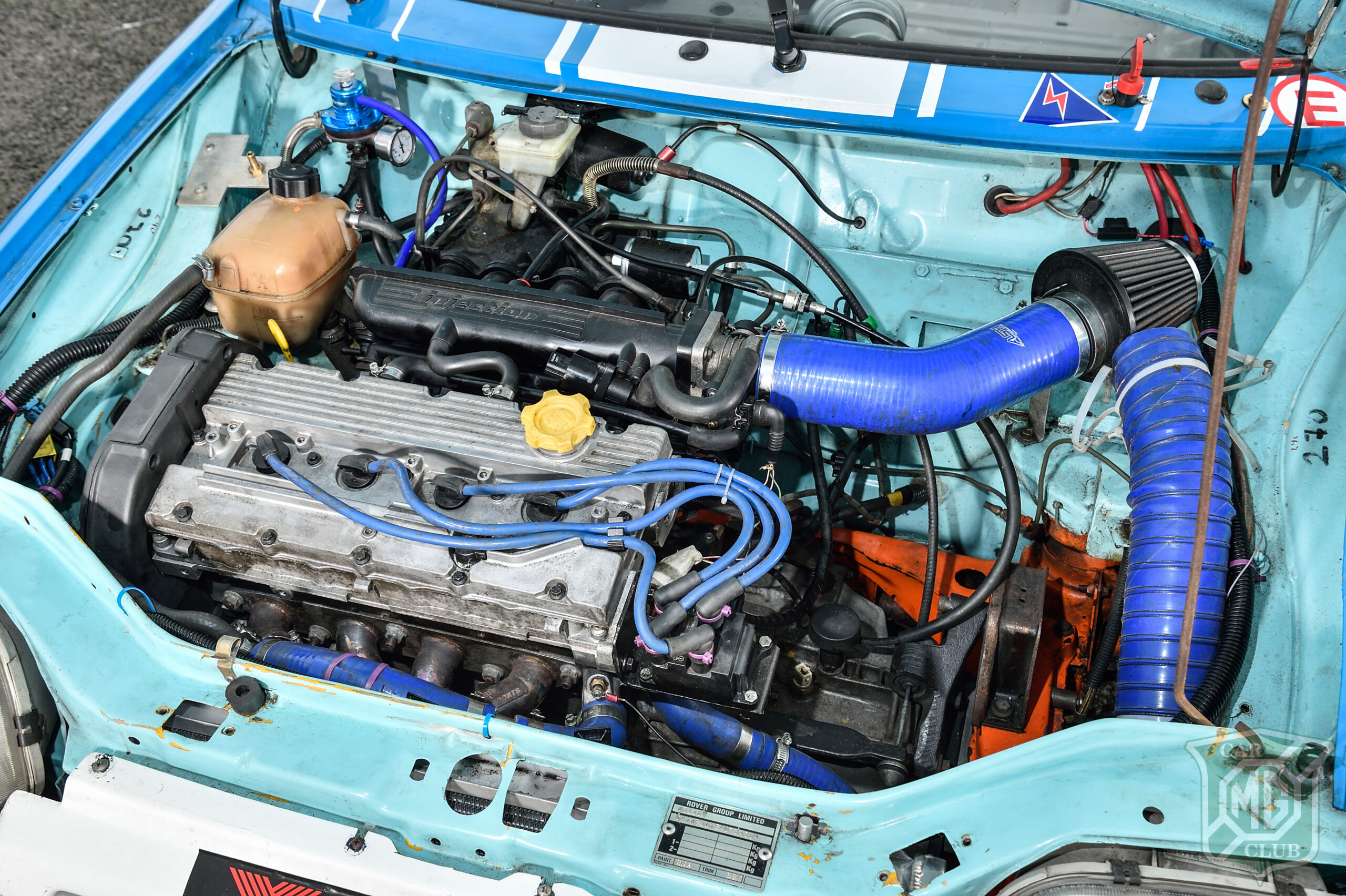
To further encourage new racers, there’s also the option of teaming up with someone who lives nearby to act as a mentor, perhaps to help with preparing the car or to offer advice. And should you happen to be under 25, the Club runs a scheme that halves the price of your race entry fees. “When I started I was still in college, so it’s helped me a lot with the affordability over the years,” explains Kyla.
It all makes for a very compelling case to join the grid, but should potential newbies go for an A-Series Metro, or head down the K-Series route? The A-Series is definitely more specialised with its requirement for modified parts and straight-cut gears, but Dick assures us that they last a fair while when built properly. You’ve got two options with the A-Series – a modified turbo motor to a maximum capacity of 1293cc, or naturally-aspirated up to 1380cc with a free choice of carb or carbs. The 1400 K-Series, on the other hand, is still mainstream enough that complete engines can be had for a few hundred quid. They’re kept almost entirely stock, too, making the K the cheaper option of the two.
Otherwise, it’s down to personal preference, with both very evenly matched. “A few years ago the performance was quite different,” says Emma. “We wanted to ensure that the championship had even closer racing between everybody, whether they had an A or a K-Series car, so we made some adjustments to the regs to balance them all out. As can be seen from the results, they are mixed up now, which is exactly what we wanted.”
Go your own way
The four cars you see on these pages are all prepared by Dave, Dick and Richard on various weeknights and weekends, with Kyla lending a hand when she can. Kyla reckons the knowledge she has gained has been invaluable in understanding how the car is running and spotting any problems, but you don’t have to be a mechanic to go racing. As Emma explains, some people do all the mechanical work themselves, while others send the car away and just do the driving.
With such a relaxed and welcoming ethos, there’s no pressure to conform to any pre-set ideals. “One of our drivers isn’t bothered about winning, he’s just out there for the whole package of atmosphere and friendliness, and that little bit of adrenaline rush on the grid,” Emma explains. “Others are in it for the mechanical side, tinkering with the car to take a tenth of their lap time, and there are people that want to push for placings and get trophies. The nice thing is that you can get out of it whatever you want to get out of it.”
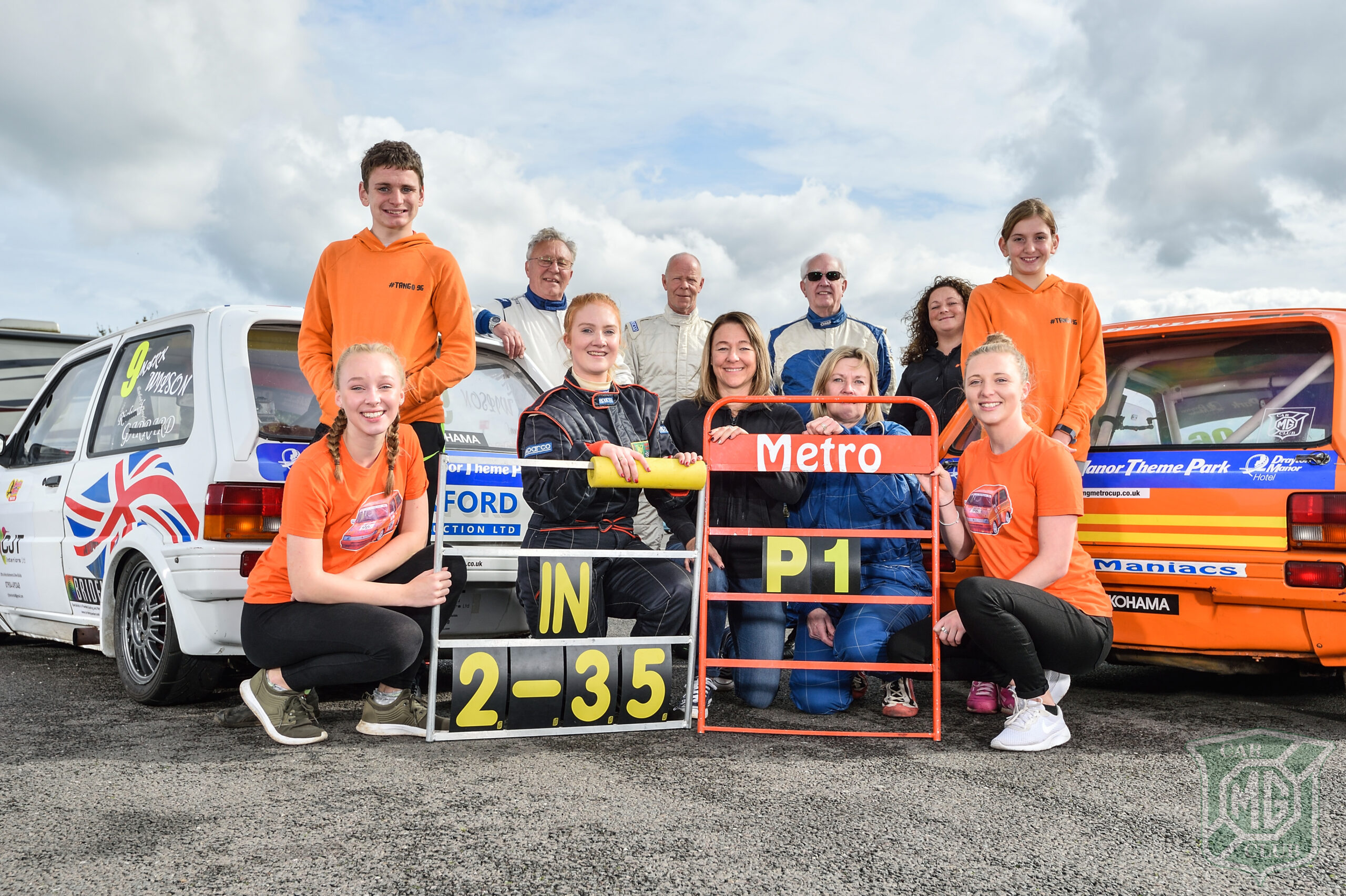
Still need convincing? Then get along to the MGCC stand at Autosport International, where you can see Richard’s Metro GTi in the metal. Be warned, though, as these two families prove, these seemingly innocuous small hatches can be seriously addictive.
For what appears to be a humble little hatch, the Metro is a car full of surprises. Not only did it help carry the Octagon forward in the dark days of the early 1980s, it played a starring role in a race series that helped fuel the careers of BTCC legends like Tim Harvey and Steve Soper. Even reigning champion Colin Turkington cut his teeth in a Metro, having won his first-ever title in the 1998 Northern Irish Metro Championship.
The factory-backed Metro Challenge replaced the outgoing Mini 1275 GT Challenge for 1981, and by 1983 had been renamed the MG Metro Challenge. The cars competed at circuits home and abroad, with an upgrade to Turbo spec for 1987. Sponsors over the years included Unipart, British Car Auctions and Esso, with Metros acting as a support races at prestigious events like the British Grand Prix. Rover moved its support to the multi-discipline Metro GTi in the early 1990s, but that wasn’t the end. The MG Metro Cup stepped in, and has been running for 27 successful seasons, and with ever-present sponsorship from long-term backers Drayton Manor Theme Park. Long may it continue!

 MG Car Club
MG Car Club
